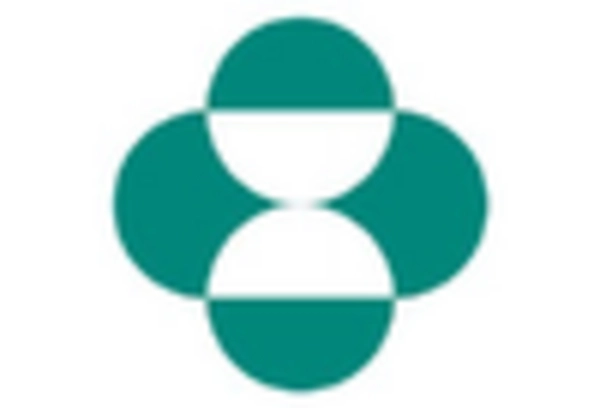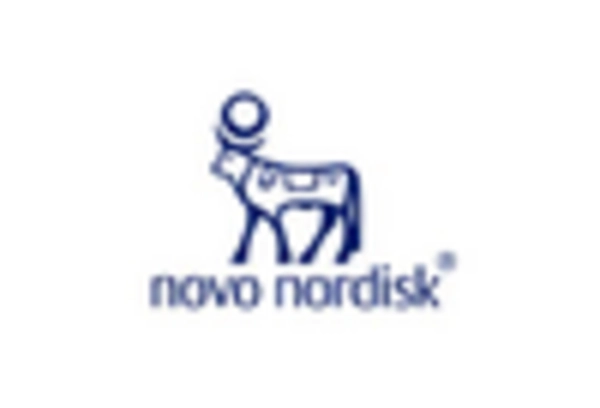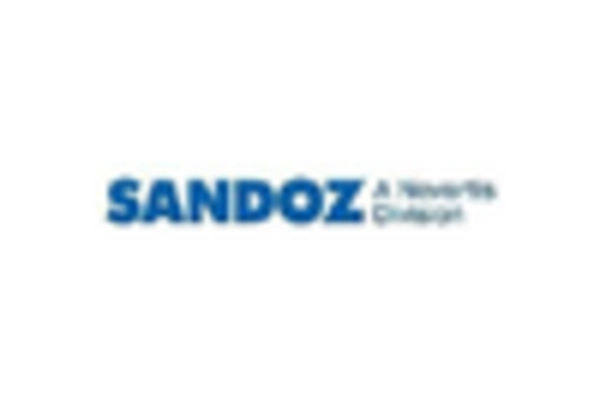Increasing Demand for Anti-Aging Treatments
The human growth-hormone market is experiencing a notable surge in demand for anti-aging treatments. As the population ages, there is a growing interest in therapies that can mitigate the effects of aging, such as decreased muscle mass and increased body fat. This trend is particularly pronounced among individuals aged 40 and above, who are increasingly seeking solutions to enhance their vitality and overall well-being. The market for anti-aging products is projected to reach approximately $60 billion by 2025, indicating a robust growth trajectory. This increasing demand is likely to drive innovation and investment in the human growth-hormone market, as companies strive to develop effective and safe treatments that cater to this demographic.
Rising Prevalence of Growth Hormone Deficiency
The human growth-hormone market is significantly influenced by the rising prevalence of growth hormone deficiency (GHD) among various age groups. GHD can lead to various health issues, including obesity, decreased bone density, and impaired physical performance. Recent studies indicate that approximately 1 in 3 adults may experience some form of GHD, which is prompting healthcare providers to seek effective treatment options. This increasing recognition of GHD is likely to expand the patient base for human growth-hormone therapies, thereby driving market growth. Furthermore, the emphasis on early diagnosis and intervention is expected to enhance the adoption of human growth-hormone treatments, contributing to the overall expansion of the market.
Growing Focus on Sports Performance Enhancement
The human growth-hormone market is also being driven by a growing focus on sports performance enhancement. Athletes and fitness enthusiasts are increasingly turning to human growth-hormone therapies to improve their physical performance, recovery times, and muscle mass. This trend is particularly evident in competitive sports, where the pressure to achieve peak performance is intense. Although the use of human growth-hormone in sports is often controversial and subject to regulatory scrutiny, the demand for performance-enhancing treatments remains strong. This ongoing interest in human growth-hormone therapies for athletic performance is likely to sustain market growth, as more individuals seek to gain a competitive edge.
Increased Investment in Research and Development
The human growth-hormone market is benefiting from increased investment in research and development (R&D) by pharmaceutical companies. This investment is aimed at discovering new applications for human growth-hormone therapies, including potential treatments for conditions such as obesity and metabolic disorders. As companies allocate more resources to R&D, the likelihood of innovative products entering the market increases, which could enhance treatment options for patients. Furthermore, the collaboration between academic institutions and industry players is fostering a conducive environment for breakthroughs in human growth-hormone research. This trend of heightened investment in R&D is expected to propel the human growth-hormone market forward, potentially leading to a broader range of therapeutic applications.
Technological Innovations in Drug Delivery Systems
Technological advancements in drug delivery systems are playing a crucial role in shaping the human growth-hormone market. Innovations such as sustained-release formulations and needle-free delivery systems are enhancing patient compliance and treatment efficacy. These advancements not only improve the convenience of administration but also minimize the discomfort associated with traditional injection methods. As a result, the market is witnessing a shift towards more patient-friendly options, which could potentially increase the uptake of human growth-hormone therapies. The introduction of these innovative delivery systems is expected to contribute to a projected market growth rate of around 8% annually over the next few years.

















Leave a Comment